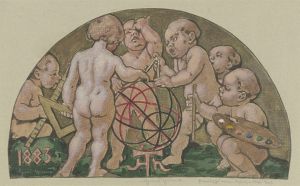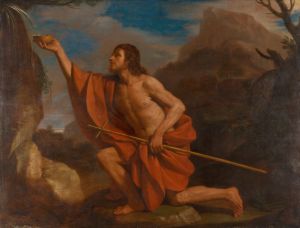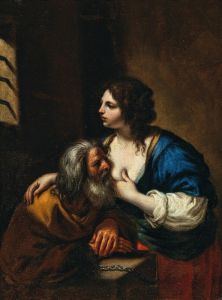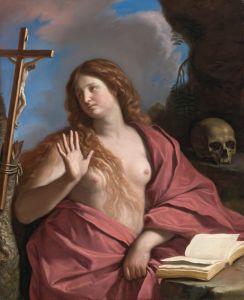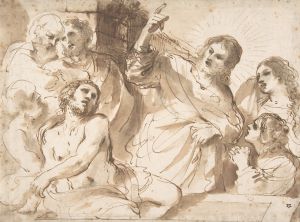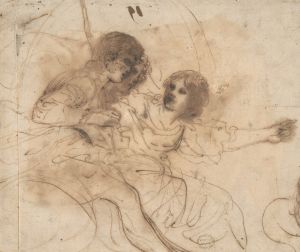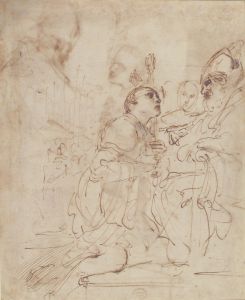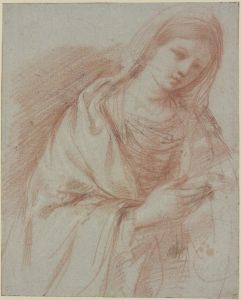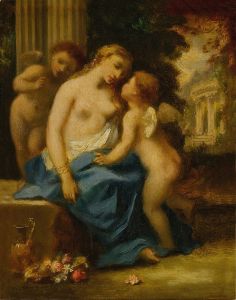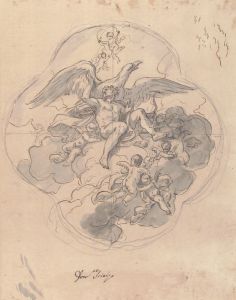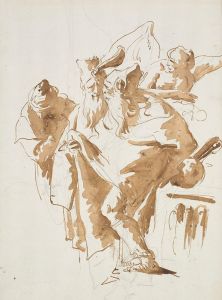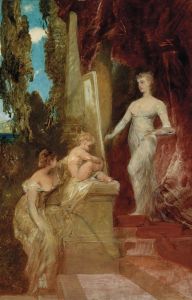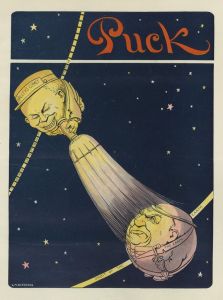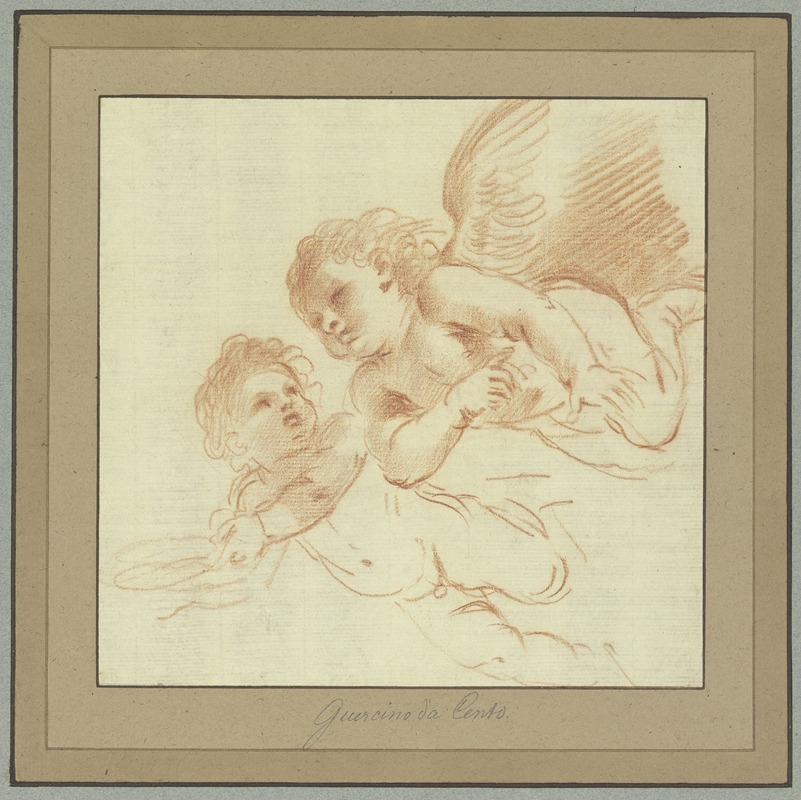
Zwei nach links fliegende Amoretten
A hand-painted replica of Guercino’s masterpiece Zwei nach links fliegende Amoretten, meticulously crafted by professional artists to capture the true essence of the original. Each piece is created with museum-quality canvas and rare mineral pigments, carefully painted by experienced artists with delicate brushstrokes and rich, layered colors to perfectly recreate the texture of the original artwork. Unlike machine-printed reproductions, this hand-painted version brings the painting to life, infused with the artist’s emotions and skill in every stroke. Whether for personal collection or home decoration, it instantly elevates the artistic atmosphere of any space.
Zwei nach links fliegende Amoretten (Two Amoretti Flying to the Left) is a drawing by the Italian Baroque artist Giovanni Francesco Barbieri, commonly known as Guercino (1591–1666). Guercino, whose name means "the squinter" in Italian, was a prominent painter and draftsman of the 17th century, celebrated for his dynamic compositions, expressive figures, and masterful use of chiaroscuro.
This artwork, executed in pen and ink with wash, depicts two winged putti, or amoretti, flying toward the left. The figures are rendered with fluid, energetic lines that convey a sense of movement and vitality. Guercino's skillful handling of light and shadow enhances the three-dimensionality of the figures, giving them a lifelike presence. The drawing exemplifies the artist's ability to capture the grace and playfulness often associated with such mythological subjects.
Guercino was known for his prolific output of drawings, which served as preparatory studies for his paintings or as independent works of art. His drawings were highly valued during his lifetime and remain significant for understanding his creative process. While the exact purpose of Zwei nach links fliegende Amoretten is not definitively documented, it is consistent with Guercino's practice of creating studies for larger compositions or decorative projects.
The drawing reflects the Baroque era's fascination with dynamic movement and emotional expression. Amoretti, often depicted as symbols of love and desire, were common motifs in Baroque art, appearing in both religious and secular contexts. Guercino's treatment of the subject demonstrates his mastery of anatomy and his ability to infuse his figures with a sense of liveliness and charm.
The current location of Zwei nach links fliegende Amoretten is not specified in available records, but many of Guercino's drawings are housed in major collections, such as the Royal Collection in Windsor, the Louvre in Paris, and the Uffizi in Florence. These institutions preserve and study his works, ensuring their continued appreciation and scholarly examination.
As with many of Guercino's drawings, this piece offers insight into the artist's technical skill and creative imagination. It stands as a testament to his enduring legacy as one of the leading figures of the Italian Baroque.





